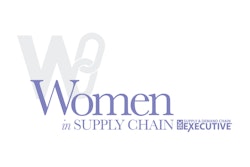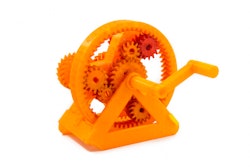
Will the Coronavirus disease (COVID-10) have a lasting impact in terms of change and uncertainty for every industry including manufacturing? The year saw ups and downs for manufacturers, including eight straight months of economic growth according to the ISM Manufacturing Report. While this growth brings optimism there is still an unprecedented amount of uncertainty surrounding the space. All of this change left manufacturers having to adjust their overall strategies to stay afloat during one of the strangest -- and ultimately most trying -- times we’ve ever faced.
With that in mind, here are three manufacturing predictions to be front and center in the New Year, and how they will impact the industry moving forward.
Pandemic drives new customer experience
From remote service to “contactless” test drives, manufacturing has gone to great lengths in its attempts to modify existing operations, so that it can meet customer needs in a “COVID-19-safe” manner. And, with customers becoming more accustomed to these offerings and workers becoming more comfortable with these new methods, expect the manufacturing industry to further integrate these “alternatives” into its long-term approaches. This will allow manufacturers to not only deliver more personalized service, but will also give them the opportunity to further diversify their operations and build new workforces.
New technology officially becomes “mainstream”
The COVID-19 pandemic has caused the manufacturing industry to scrutinize its entire infrastructure and operations to drive efficiencies in the network. And, with that, manufacturing businesses are beginning to more widely embrace sophisticated computing technologies to help them minimize gaps that may have been uncovered during the COVID-19 era. For example, more and more manufacturers are beginning to embrace Internet of Things (IoT) and data technologies to provide greater verification of sourcing provenance, while others are looking at ways in which technology such as artificial intelligence, machine learning and IoT can be used to support remote workforces to make them more agile and effective with automation and predictive services. This means that 2021 could be the dawn of a manufacturing sector that looks much different technologically from anything that we have seen in the past.
A new dawn for network collaboration
Collaboration in consumer and enterprise markets has become a necessity for incumbents to retain market share due to significant encroachment from digital disruptors. And, the manufacturing sector will need to embrace the same approach moving forward. To remain competitive, manufacturers need to shift from the traditional linear contracts in the supply chain to multi-party collaborative partners with greater focus on services end-customer demands. This will help all parties better manage capital while also offering creative solutions to customer needs.
As we look ahead to the New Year, only time will tell what impact COVID-19 will have on the manufacturing industry. Will the vaccine rollout have a positive impact on the manufacturing economy? Will we get this virus under control that has altered the way so many businesses and companies operate? Regardless, these three areas will be critical to manufacturing in 2021 and beyond.
















![Pros To Know 2026 [color]](https://img.sdcexec.com/mindful/acbm/workspaces/default/uploads/2025/08/prostoknow-2026-color.mduFvhpgMk.png?ar=16%3A9&auto=format%2Ccompress&bg=fff&fill-color=fff&fit=fill&h=135&q=70&w=240)

